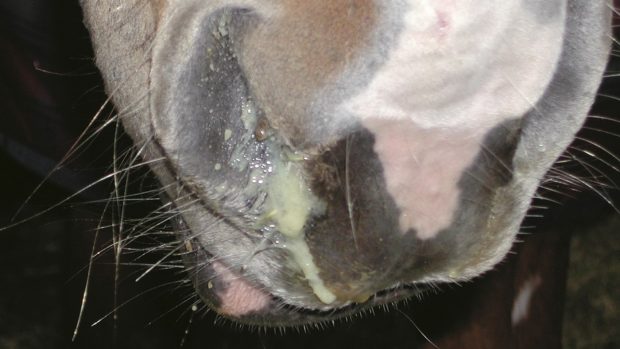Event rider Carolyn Gardiner was driving on the A34 with two horses – High Robins, an advanced eventer previously ridden by Bumble Thomas, and a mare, Penny – accompanied by a friend. At 45-50mph, without warning, the nearside rear wheels came off.
“The lorry went all over the road,” says Carol. “It hit the kerb and turned over.”
Driver and passenger climbed out of the windscreen void. High Robins stood up, and Penny was up seconds later. Carolyn was bruised and Penny had flesh wounds, but miraculously there were no other injuries.
All the tyres and wheel hubs were intact – the wheel nuts had simply come unscrewed. Yet the lorry passed its annual Goods Vehicle Test seven weeks and had since done only 130 miles. Before the test, its nuts had been tightened.
Gaby Sayers, a crash recovery expert, provides an explanation for this type of accident – quite a common occurence, he says – that is rooted in EU bureaucracy.
He explains: “Before we joined the EU, goods vehicle wheels were fixed on with cone-backed nuts, which went into cone-shaped recesses. The nuts on the offside had right-hand threads; those on the nearside had left-hand threads. This prevented the nuts from coming unscrewed.
“Then wheel designs were standardised. All nuts, both offside and nearside, now have right-hand threads.
“When wheels are fitted, contact surfaces must be spotless. A speck of dirt, rust or paint forms a high spot, and the wheel may not bed down properly. The wheel becomes loose. With loose right-hand thread nuts on offside wheels, driving tends to tighten them; on the nearside it loosens them.
“Wheels do come off, often in the first 100-200 miles after a service.”
Bruce Wofford, who owns an international transport firm, says: “We have to be very careful, and have our vehicles serviced every six weeks. A right-hand thread isn’t a problem unless the vehicle is poorly maintained – but horse owners don’t always know to check the nuts frequently.”
Wheel trims over the nuts can hide damage, and Gaby recommends taking them off and using a set of yellow arrowheads, available from motoring retailers. For each adjacent pair of nuts, these are clipped on with the arrowheads pointing at each other. If a nut comes unscrewed, it can be spotted and re-tightened.
|
||
 |
||


 Get up to 19 issues FREE
Get up to 19 issues FREE TO SUBSCRIBE
TO SUBSCRIBE 



